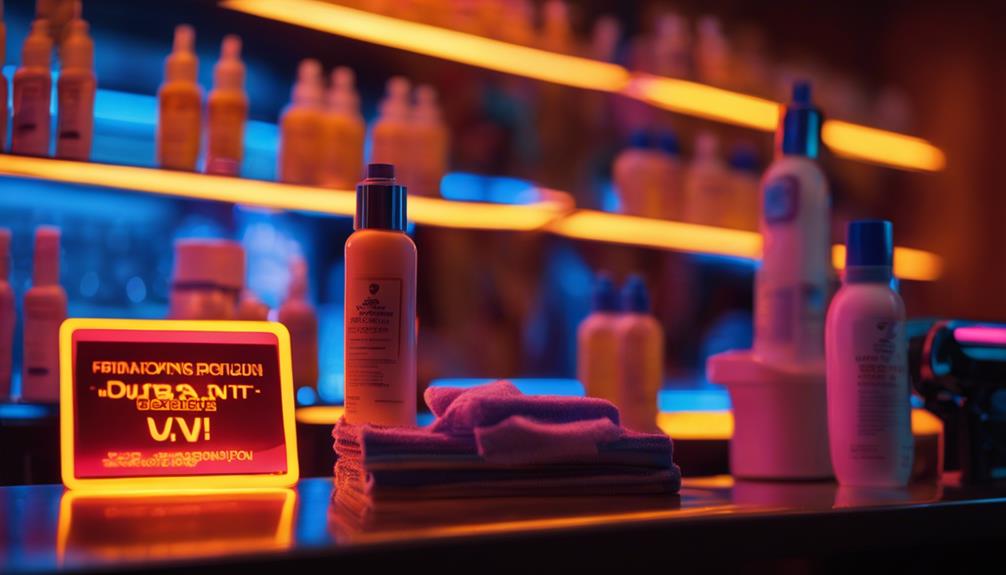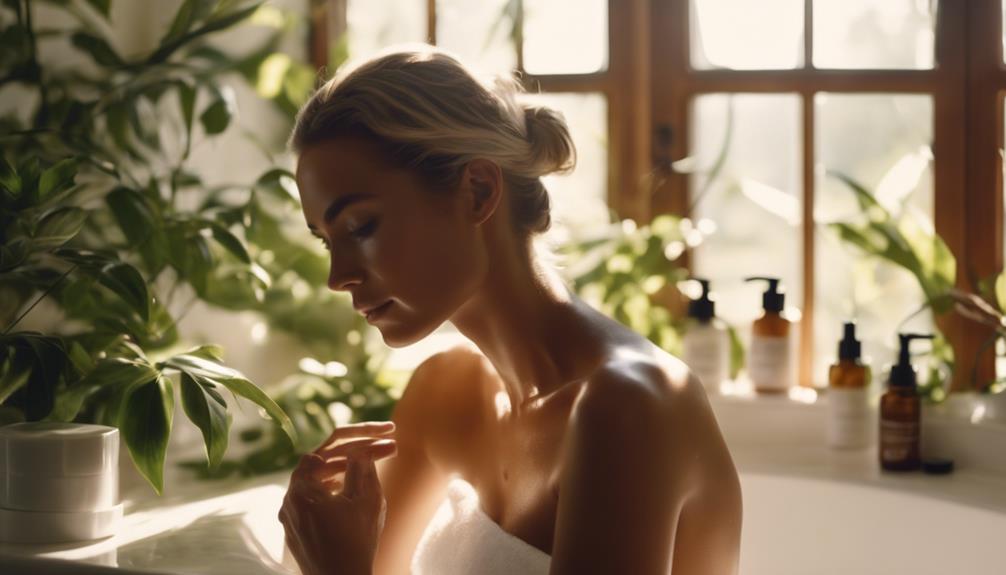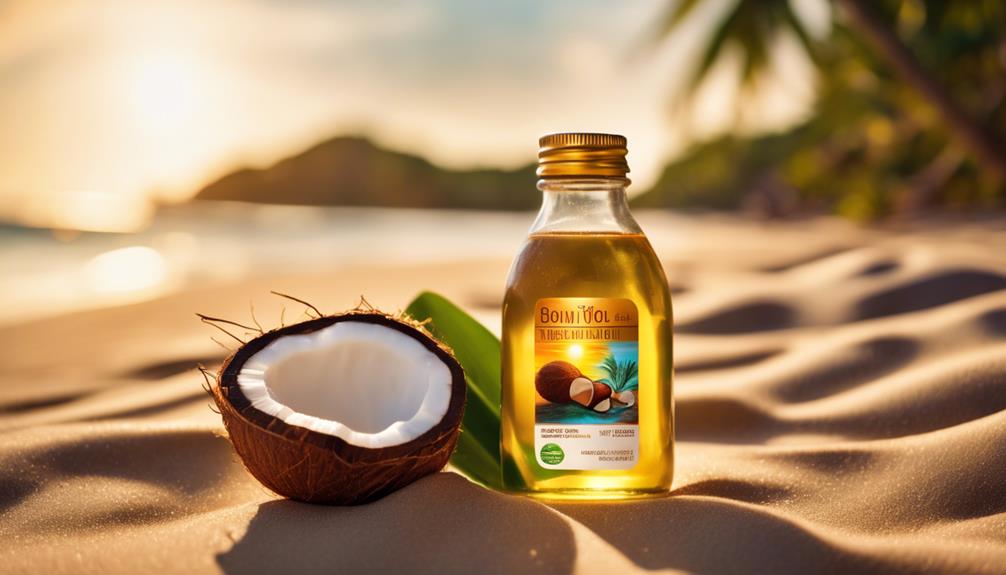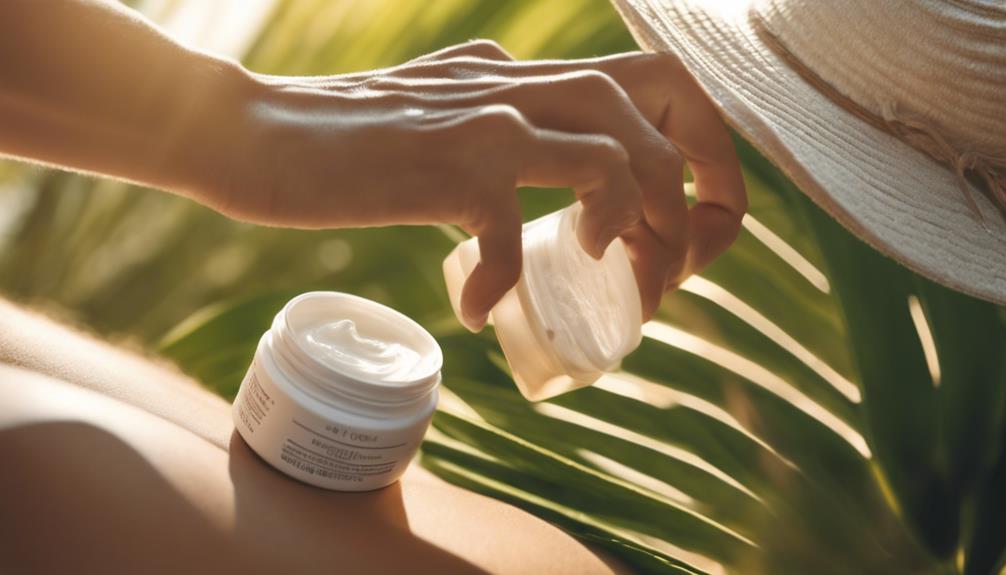Tanning beds expose your skin to intense UV rays, increasing your risk of skin cancer and premature aging. You are more likely to develop wrinkles and age spots, particularly if you have fair skin. UVB rays can cause immediate damage, while UVA rays contribute to long-term skin issues, such as melanoma. To protect yourself, always wear UV-blocking goggles and limit your tanning sessions. Apply broad-spectrum sunscreen before tanning and monitor your skin for any abnormal changes. It is crucial to be aware of the risks and protective steps needed, and there is a lot more to learn about maintaining healthy skin.
Key Takeaways
- Tanning beds emit harmful UVA and UVB rays, increasing the risk of skin cancer and premature aging compared to natural sunlight.
- Fair-skinned individuals are at greater risk for skin damage and should avoid tanning beds altogether.
- Always wear UV-blocking goggles and apply high SPF broad-spectrum sunscreen before using tanning beds.
- Limit tanning bed sessions to reduce cumulative UV exposure and mitigate long-term skin damage.
Understanding UV Rays
Understanding UV rays is essential because they play a significant role in both skin damage and the tanning process.
Tanning beds primarily emit UVA and UVB rays, just like natural sunlight. You should know that UVA rays make up about 94% of UV radiation and are linked to accelerated skin aging and a higher risk of skin cancer.
On the other hand, UVB rays, though fewer, can cause immediate skin damage, such as sunburns. It's vital to recognize that tanning beds amplify your UV exposure, which poses significant risks compared to sunbathing outdoors.
Awareness of these rays helps you make informed decisions about tanning practices and protect your skin from harmful effects. Always prioritize your skin's health and safety.
Risks of Tanning Beds
Tanning beds greatly increase your risk of premature aging and skin cancer, making it essential to be aware of their dangers. The UV rays emitted can lead to irreversible skin damage and heighten the chances of developing melanoma. Understanding these risks can help you make informed decisions about your tanning habits.
| Risk Factor | Description |
|---|---|
| Premature Aging | Repeated exposure leads to wrinkles and age spots. |
| Skin Cancer | Increased risk of melanoma and non-melanoma types. |
| Eye Damage | UV exposure can cause cataracts and other issues. |
| Fair Skin Sensitivity | Fair-skinned individuals are at higher risk. |
| Mole Count | More moles increase susceptibility to skin damage. |
Awareness is key to protecting your skin health.
Safety Guidelines
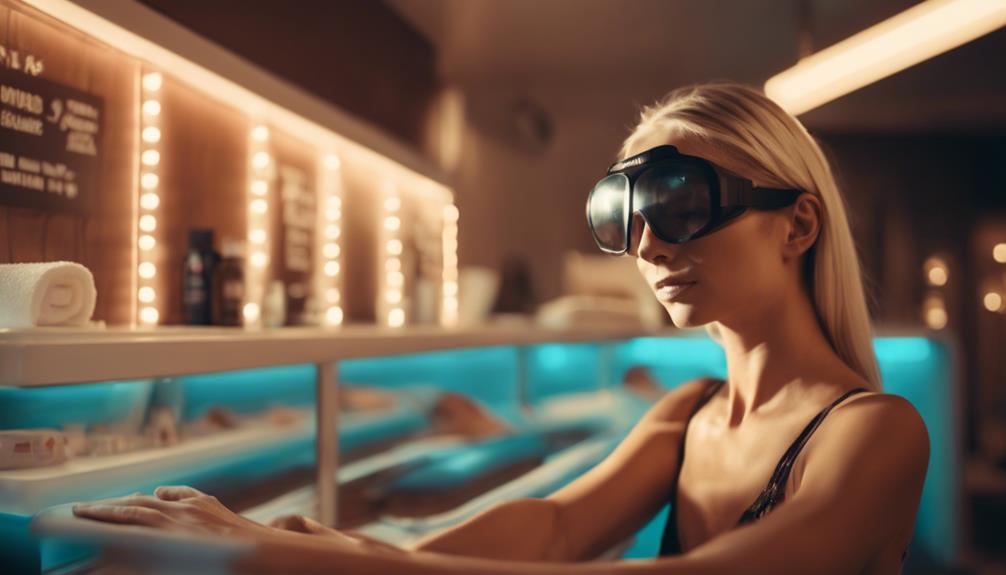
To guarantee your safety while using tanning beds, always wear UV-blocking goggles to protect your eyes from harmful rays.
Limit your tanning bed sessions to reduce cumulative UV exposure and minimize risks associated with skin damage.
Before tanning, apply a broad-spectrum sunscreen with a high SPF to shield your skin.
If you're under 18 or have particularly sensitive skin, it's best to avoid tanning beds altogether.
Regularly check your skin for any unusual changes or moles, as early detection of potential damage is essential.
Staying informed and following these safety guidelines can help you enjoy tanning while protecting your skin and overall health.
Always prioritize safety to guarantee a positive tanning experience.
Best Practices for Skin Care
Regularly monitoring your skin for any unusual changes after tanning is essential for maintaining ideal skin health. Check for new moles, discolorations, or any areas that appear different.
Limit your tanning bed sessions to reduce UV exposure and minimize potential damage. After tanning, hydrate your skin with a quality moisturizer to restore moisture lost during the process.
Using a lower UV rating during sessions can also help reduce risks. Don't forget to apply broad-spectrum sunscreen with a high SPF before tanning to protect your skin.
Common Myths About Tanning

Many people hold misconceptions about tanning that can lead to unsafe practices and increased health risks. Here are four common myths you should know about:
- Tanning beds are safer than the sun – This isn't true; they emit high levels of UVA and UVB rays, increasing skin damage risks.
- You can't get sunburned in a tanning bed – Even if you don't burn immediately, UV exposure can still harm your skin over time.
- Base tans protect against sunburn – A base tan offers minimal protection and doesn't prevent skin damage.
- Tanning is healthy for everyone – Not everyone can safely tan; fair-skinned individuals are at greater risk for skin issues.
Stay informed and prioritize your skin's health!
Long-Term Effects of UV Exposure
Long-term exposure to UV rays can lead to serious skin conditions, including accelerated aging and an increased risk of skin cancer. You might notice premature wrinkles, age spots, and a leathery texture as your skin ages faster than it should.
The risk of developing melanoma, the deadliest form of skin cancer, also rises considerably with consistent UV exposure. Additionally, over time, you could experience changes in your skin's elasticity and overall appearance, making it vital to monitor your skin's health.
Protecting yourself from UV rays is essential, so consider limiting your tanning bed use and always prioritize skin health.
Resources for Safe Tanning

To guarantee safe tanning practices, it's essential to access reliable resources that provide guidance on minimizing UV exposure and protecting your skin. Here are four key resources to take into account:
- Dermatology Websites: Check sites like the American Academy of Dermatology for expert advice on tanning and skin care.
- Local Health Departments: Many offer educational materials on the risks of UV exposure and safe tanning practices.
- Tanning Salon Guidelines: Reputable salons often provide safety protocols and can recommend the safest tanning options.
- Skin Cancer Foundations: Organizations like the Skin Cancer Foundation offer valuable tips on safe tanning and skin health monitoring.
What Are the Potential Risks of UV Exposure in Tanning Beds?
Uncovering tanning bed risks involves understanding the potential harm of UV exposure. Increased risk of skin cancer, premature aging, and eye damage are some consequences. The intense UV rays can also weaken the immune system and cause sunburn. Using tanning beds can pose serious health threats if not approached with caution.
Conclusion
In the dance between that sun-kissed glow and your skin's health, it's essential to know the steps.
Tanning beds may lure you in with promises of bronzed beauty, but the lurking dangers can cast a long shadow.
By understanding UV risks and embracing safety guidelines, you can protect your skin while still radiating confidence.
So, before you plunge into the glow, arm yourself with knowledge and let your natural beauty shine, unblemished by the hidden perils of tanning.

